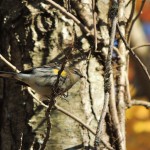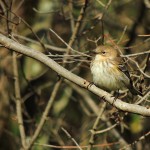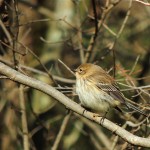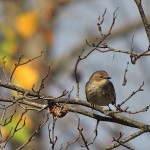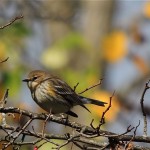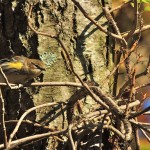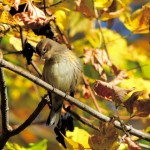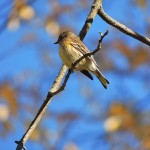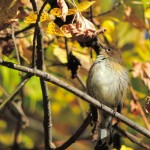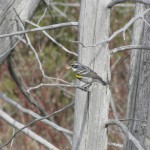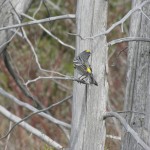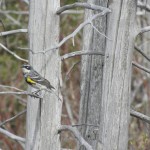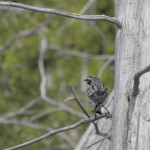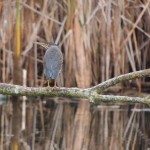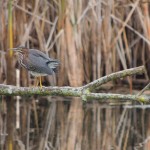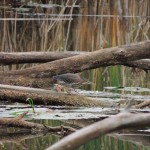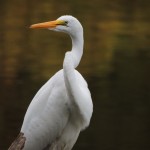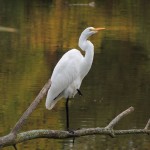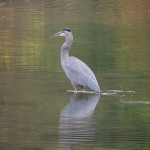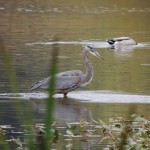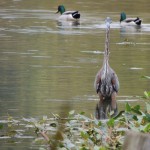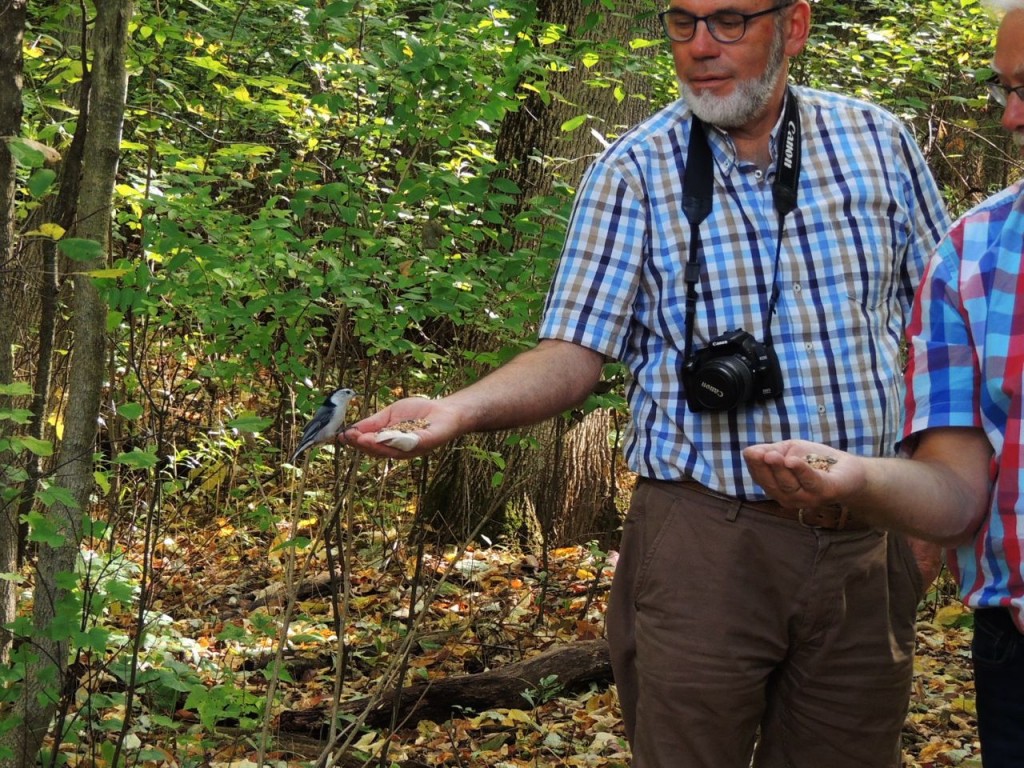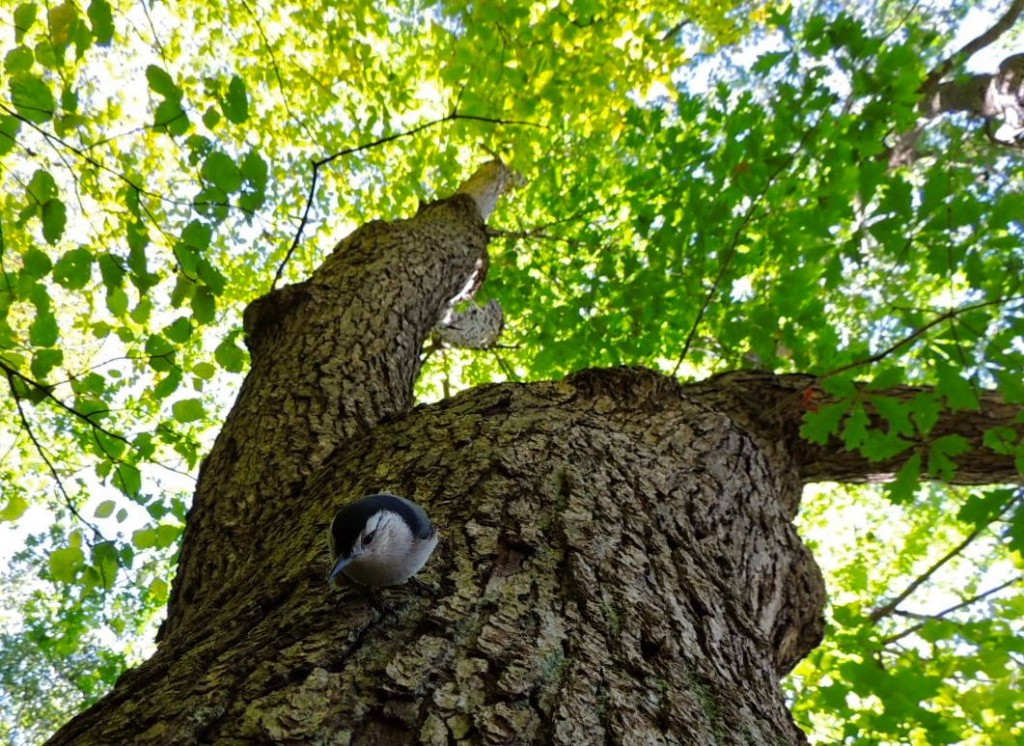18 October 2013. Cayuga ON. It’s a mad scramble to get out now that the weather has turned. The past couple of weeks following four solid days of cold and rain, have been two weeks of urgency. More dirty weather is coming and the skies are full of birds on the move. It’s as if someone yelled Fire!
I did the daily census at the bird observatory this morning and found myself staring helplessly at a wall of trees full of European Starlings, Cedar Waxwings and Red-winged Blackbirds, quite unable to count them. There’s no better word than cacophony to describe the unending din from the flocks. Small groups of American Robins were flapping around clucking and singing little snatches of song, White-throated Sparrows stayed low but maintaining contact with their metallic ‘pink’ and even a few Golden Crowned Kinglets fluttered for insects in the lower grape bunches and tangles of weeds. My census counts gave only order of magnitude at best.
Moving on from that hotspot, I ended up in a quieter wooded valley and enjoyed watching and comparing Downy and Hairy Woodpeckers. The calls of the two species are so alike that I frequently have some misgivings about adding either to the census without a confirmatory sighting. In the back of my mind is a little mental recording of the Hairy Woodpecker’s clatter of indignation remembered from when once I got too close to a nest full of fledglings. The coarse, rapid-fire, metallic quality of the notes sets the Hairy apart from the almost pretty staccato of the Downy; but if I make it sound easy, it’s not, the differences between them is easily blurred by time and circumstances.
As I watched the two look-alike, sound-alike cousins I was drawn to another woodpecker, a Yellow-bellied Sapsucker, immediately it became my Bird of the Day. We don’t see many of them around here, they pass through in spring and fall and they’re fairly undemonstrative. The field mark that always catches my eye is the long stripe of white down the wing; otherwise they look superficially like a Downy or Hairy Woodpecker. Six months ago I watched (and wrote about – click here) one drilling for sap in the tender bark of a Sugar Maple.
Yellow-rumped Warblers swarmed in some warm corners, working hard to glean insects for the journey and days ahead. Perhaps my bird of the day should have been the Hermit Thrush, I saw two but they’re so elusive that it’s hard to get quality time with them. Still, they’re an elegant, if shy, bird subtly dressed in warm browns and with a boldly spotted breast.
This post contains photos only visible if you’re on the website, not if you’re reading this as an email.




